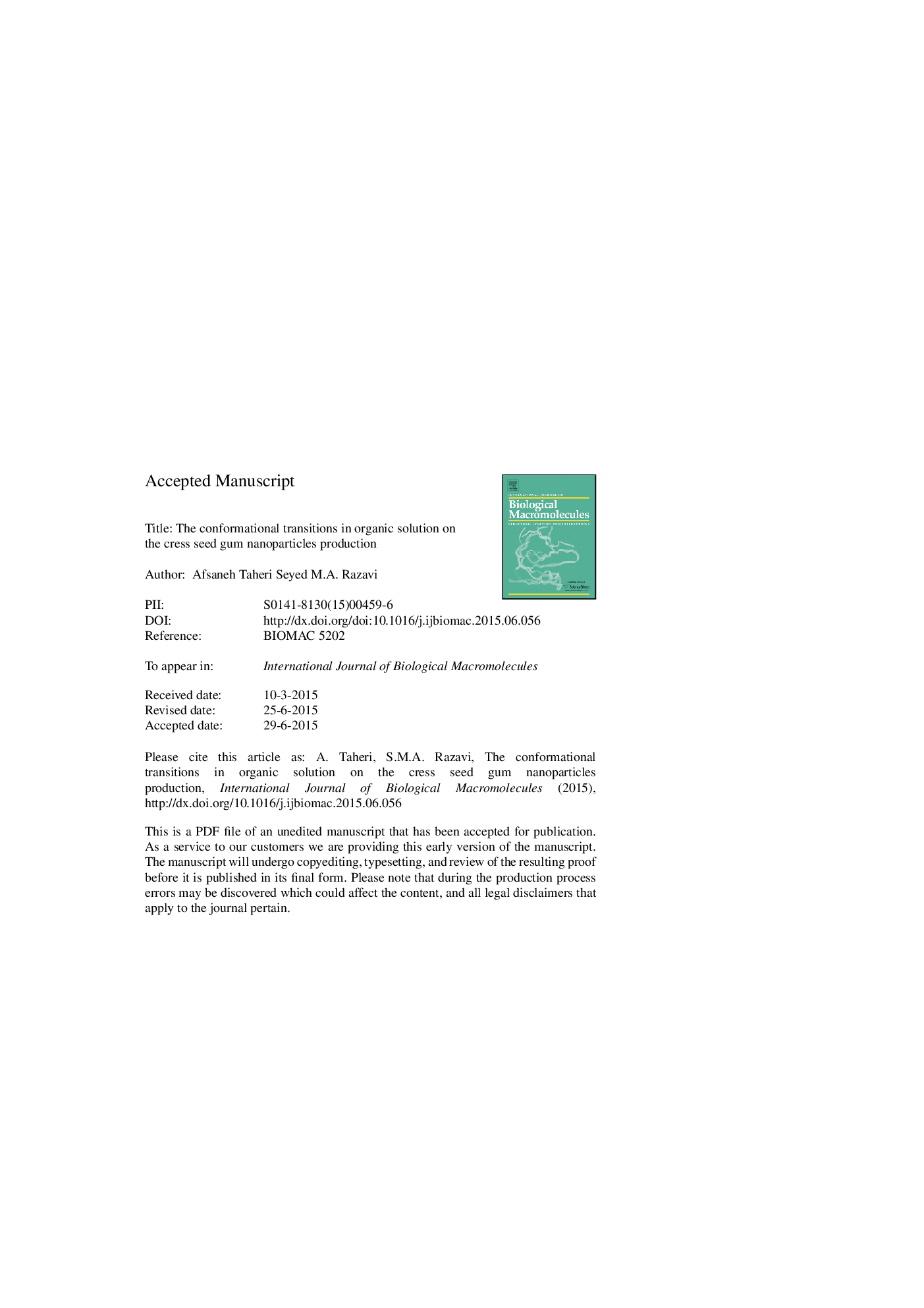| Article ID | Journal | Published Year | Pages | File Type |
|---|---|---|---|---|
| 8330699 | International Journal of Biological Macromolecules | 2015 | 27 Pages |
Abstract
The seeds of Lepidium sativum (garden cress) were selected as a new hydrocolloid source to fabricate cress seed gum nanoparticles (CSGN) by the desolvation method. The intrinsic viscosity of the CSGN solutions was measured to evaluate the conformational differences of the CSG resulted by the various production conditions. The intrinsic viscosity of CSGN solutions was estimated by using various models, i.e. Huggins, Kraemer, Tanglertpaibul-Rao and Higiro, and then the intrinsic viscosity was an objective function aimed at optimizing the conditions for the solubilization of CSG nanoparticles by the response surface method. The results indicated that among the conditions for the preparation of nanoparticles, acetone and gum concentrations had significant effects on the intrinsic viscosity of nanoparticles. Hereby, CSG served as a source of anionic polyelectrolyte molecules in dilute solutions with acetone-water mixtures. This compound goes on to display a coil-globule transition above a certain threshold of acetone.
Related Topics
Life Sciences
Biochemistry, Genetics and Molecular Biology
Biochemistry
Authors
Afsaneh Taheri, Seyed M.A. Razavi,
